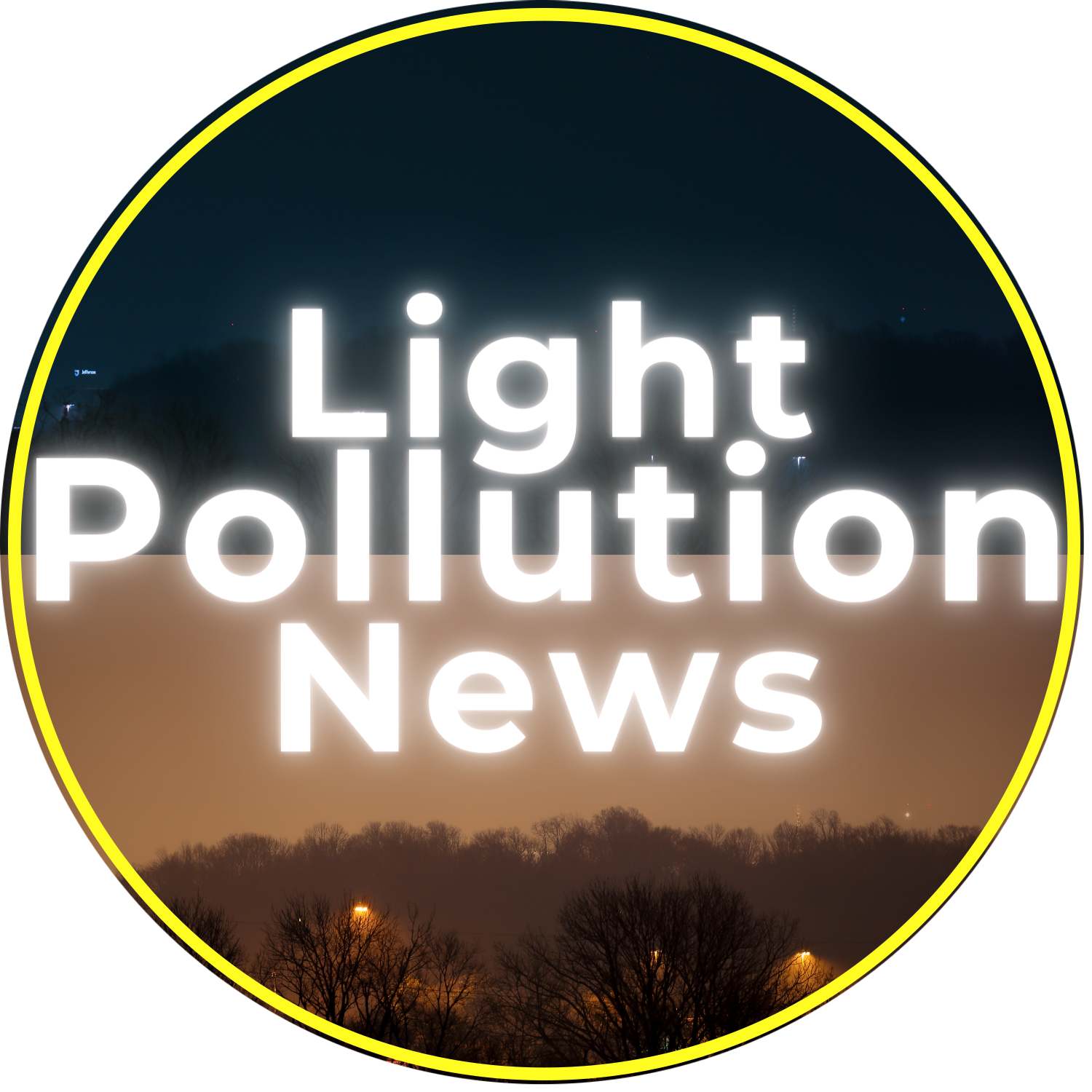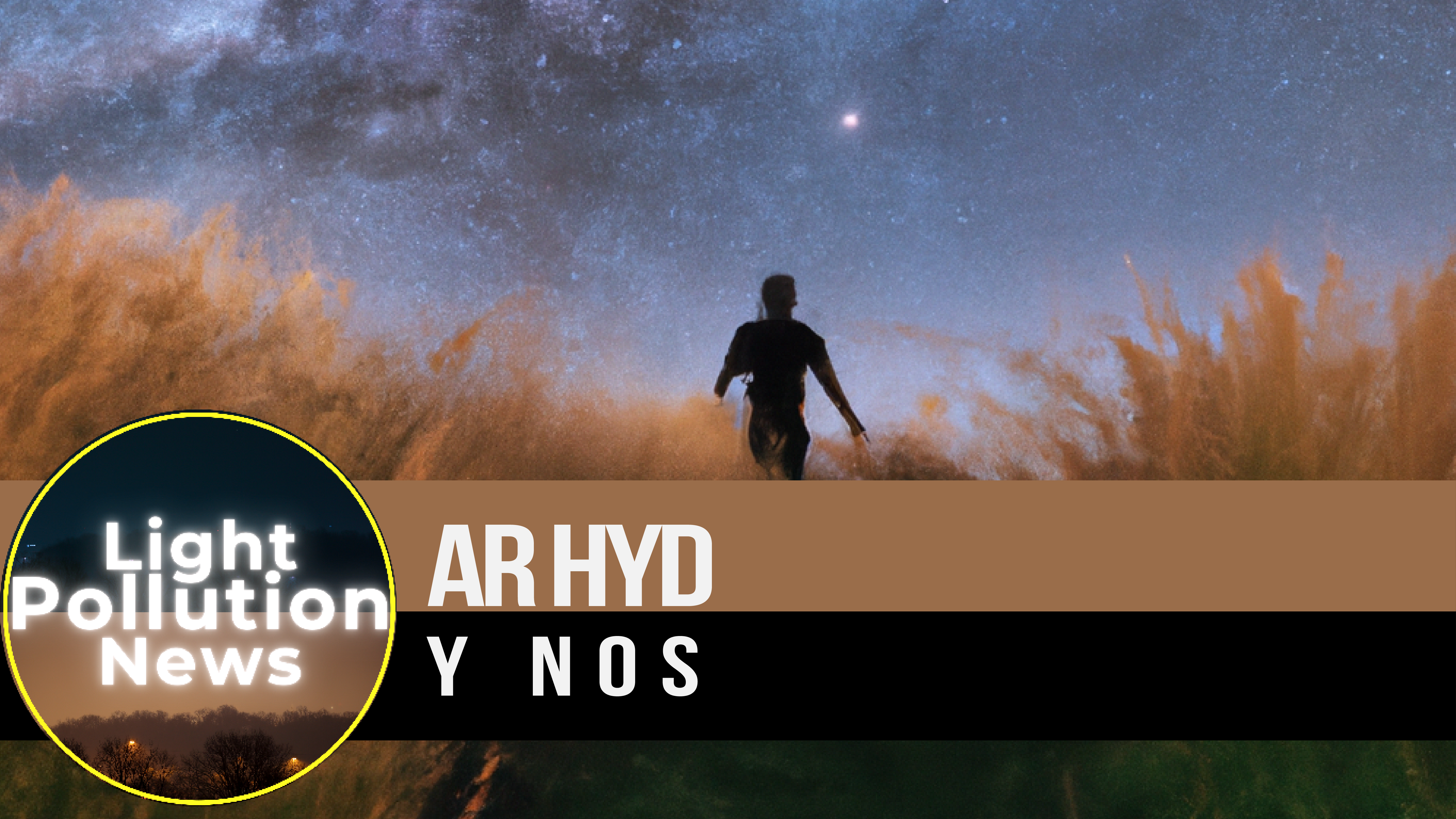
Join the conversation at r/lightpollutionnews or Follow us @Light.Pollution.News or LightPollutionNews. Join our mailing list.

March 2024: Ar Hyd Y Nos, Light Pollution News.
Host:
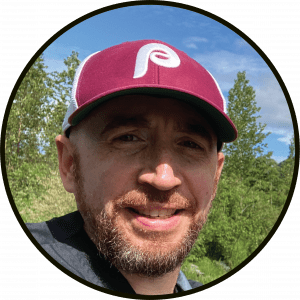
Guests:
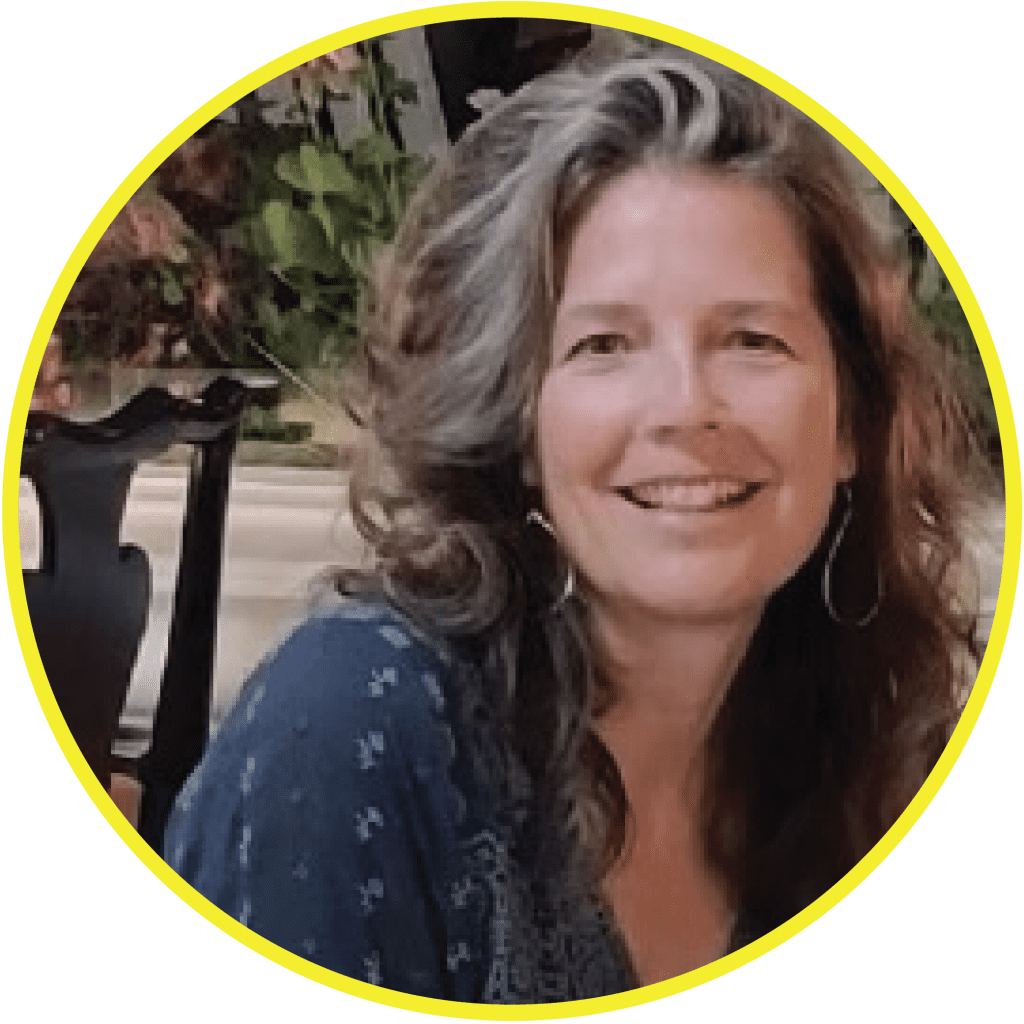

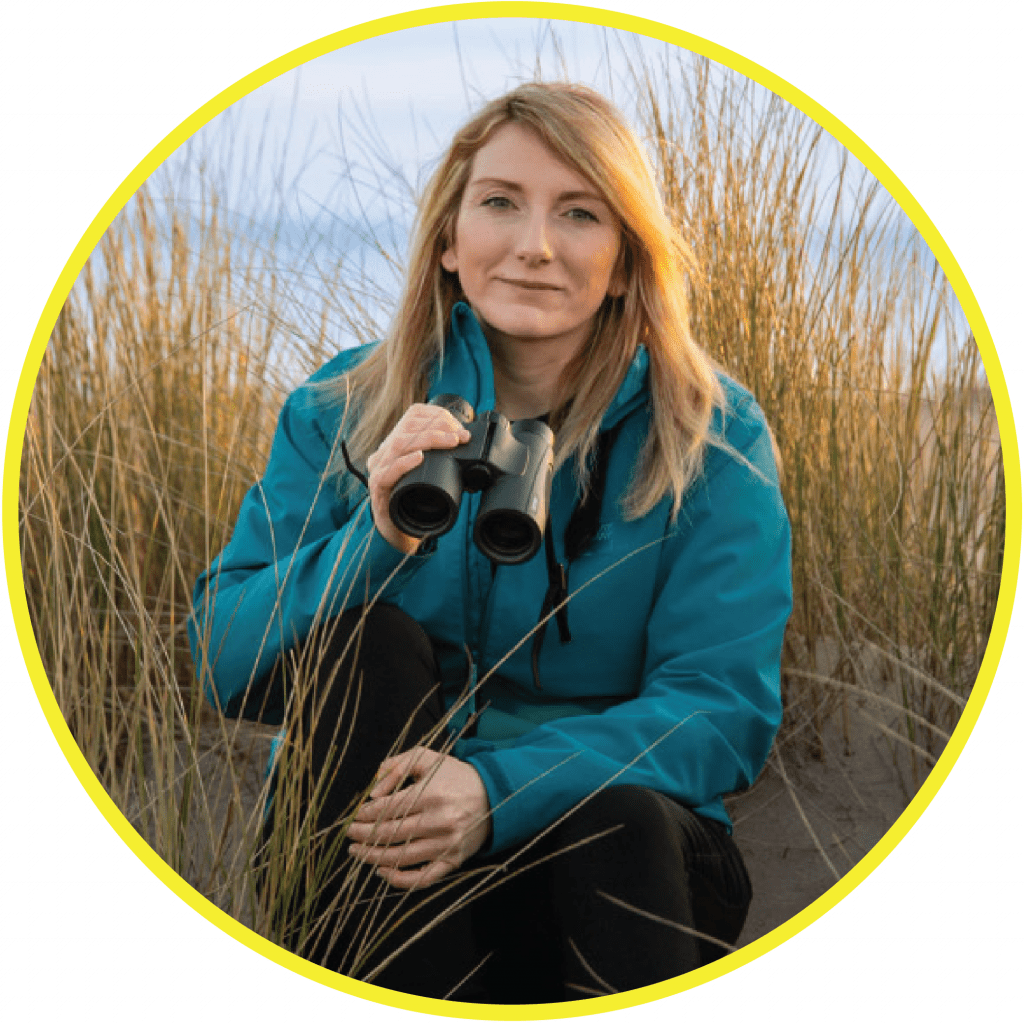
Mary Stewart Adams
For over twenty years, under the title of Star Lore Historian, Mary Stewart Adams has worked as a dark skies advocate, working to raise awareness about the effects of light pollution and to make known the mysteries of the starry skies from environmental and cultural perspectives. In 2011 she led the team that established one of the world’s first ten international dark sky parks, the success of which led to the protection of thousands of acres of state land for its natural darkness, in Michigan. Mary is a sought-after public speaker, and has, for the last 12 years, hosted the weekly public radio program and podcast “The Storyteller’s Night Sky.”
Mary has recently assumed the position of General Secretary for the Anthroposophical Society in America and she now makes her home in Ann Arbor, Michigan. She has four children and four grandchildren.
John Barentine
John Barentine is an astronomer, historian, author, science communicator, and dark-sky consultant. He earned a Ph.D. in astronomy from the University of Texas and is a member of the American Astronomical Society, the International Astronomical Union and the Royal Astronomical Society. His interests include history, politics, and law.
Dani Robertson
Dani Robertson, a Dark Sky Officer for Eryri National Park and the Areas of Outstanding Natural Beauty, is originally from Greater Manchester but moved to the Welsh countryside at an early age. She is prolific in conservation work, championing the darkness for all, and is a regular speaker at public outreach events. Her advocacy for night skies was recognized by the International Dark Sky Association in 2022, when she received the Dark Sky Defender Award. All Through the Night is her first book and will equip readers with the tools for defending our skies.
Article List:
- Why flying insects gather at artificial light, Nature.
- Artificial light at night reduces earthworm activity but increases growth of invasive ragweed, BMC Ecology and Evolution.
- Artificial light at night affects the timing of roosting by Chimney Swifts, International Journal of Avian Science.
- Something weird is happening to these Alpine goats. Scientists say it’s an ominous sign., Benji Jones, Vox.
- Light exposure from LEDs is changing the composition of seaweed | ABC News, ABC.
- Nighttime Outdoor Artificial Light and Risk of Age-Related Macular Degeneration, Ophthalmology.
- Artificial light at night suppresses the day-night cardiovascular variability: evidence from humans and rats, European Journal of Physiology.
- Association between outdoor light at night and hypertension and high-normal blood pressure: A nationwide cross-sectional study among Chinese adults, The Journal of Clinical Hypertension.
- David Duchovny tries to avoid ‘electric light’, BANG Showbiz.
- The majority of streets turned off at night in Bordeaux: what results after a year?, Jean Cittone, Le Figaro.
- China’s Shenzhen releases first local standard for dark sky community, Xinhua.
- Aspen goes dark with a new ordinance that punishes “light trespass”, Tracy Ross, The Colorado Sun.
- Making skies darker in Lake Placid and the Adirondack Park, Amy Feieresel, North Country Public Radio.
- Should Guelph work to reduce excessive lighting at night with a Dark Sky bylaw?, Guelph, Ontario.
- Killeen council to discuss program to limit light pollution and look for energy-saving options, Kevin Limiti, KDH News.
- Northampton looks to upgrade outdoor lighting ordinance, Ryan Feyre, The Reminder.
- Retired police officer wins £100,000 court fight after her pensioner neighbours sued over decorative lantern they said was stopping them sleeping in their £1m home, Summer Goodkind, Daily Mail.
- Dark Skies: Watch as Powys lights go off for dark sky, BBC.
- Moment streetlight crashes onto motorway inches away from police car, The Independent.
- New glow-in-the-dark park now open in the Dallas area, WFAA.
- Review: ‘Light/See + Dark/Hear’ Raises Questions About Separating the Senses, David Timm, Minnesota Monthly.
- Big Switch Off hopes to reveal thousands of stars, BBC.
- Stargazing and night bike rides: Eight highlights from the Dark Skies Festival 2024, Rachel Rogers, YorkMix.
- Road trip! See April’s total solar eclipse from one of these awesome North American routes, Jamie Carter, Space.com.
- The battle to save our night skies from the light, Gillian Duncan, the National News.
- Why Darkness And Stars Have Become A Luxury Only For The Elite—New Book, Jamie Carter, Forbes.
- Identification of illumination source types using nighttime light images from SDGSAT-1, International Journal of Digital Earth.
- Using satellite images to manage LED light pollution problem, Liu Jia, Chinese Academy of Sciences.
- Nocturnal Seafaring: the Reduction of Visibility at Night and its Impact on Ancient Mediterranean Seafaring. A Study Based on 8–4th Centuries BC Evidence, Journal of Maritime Archaeology.
- Orion and the Dark, Netflix.
Another big story in ecology this month!
In a study released this month from Nature, researchers believe to have confirmed that the reason that insects, such as nighttime pollinators, become trapped under artificial light at night, derives from their need to orient and navigate by sky light.
In the study, insects utilize a “dorsal light response” to point their backs toward light to orient them to safely fly at night.
Staying in the insect world, we have an article that identified impacts on the utility of soil and plant health!
Apparently artificial light at night can decrease the surface level activity of earthworms to the tune of 76%!
The study in BMC Ecology and Evolution, found that artificial light at night might force earthworms underground to forage on root structures of plants.
In addition, the study identified that 86% of earthworm mating took place on the surface, thereby posing a potential reproductive risk for the animal with relationship to artificial light at night.
Artificial Light at Night’s impact resulted in a 35% reduction in earthworms. Such activity appears to go hand in hand with a reduction in ragweed germination, the invasive plant used in the study. The study surmised that this may be due to earthworms staying underground to feed on the roots of the plant due to the light.
Despite reduced propagation of ragweed, the plant itself did apparently gain biomass. However, the short of it is that light deterred worms from aerating the soil thus preventing seed propagation.
In Australia, researchers are gauging the effect of light pollution on underwater forests, including seaweed. According to an ABC news article, it appears that light pollution can significantly affect underwater forests.
The International Journal of Avian Science confirmed that ALAN was highly predictive of Chimney Swift roosting entry times.
Chimney swifts typically use the angle of the sun (ie sunset) as one of many cues to reenter their nests.
In this study, 21 sites sat in the highly light polluted areas of the “New Jersey and New York Metropolitan areas.”
Now, I’m going to need to phrase this carefully because chimney swift activities absent of light pollution are contrary to what you might think. Chimney swifts typically go to roost earlier in the summer than they do in the autumn. This study found that in the presence of light pollution, chimney swifts actually went to bed later in the summer, in alignment with autumn.
An interesting piece from Vox closes out our ecology news. Per Benji Jones, ‘Something weird is happening to these Alpine goats.’
Essentially, alpine goats are emblematic of a greater trend for mammals, and that is to increasingly operate at night, as opposed to daytime. The article cites global warming as a major driver. However, also cited in the piece include greater human presence, not just development, but activities like hiking, and I presume offroading, such as dirtbiking, jeeping, and ATVing, would have a similar effect.
The piece doesn’t say anything about lights at night assisting these daytime dwellers in their transitions. I would be interested in seeing how much bright nights, if any, play into this transition.
I always look for a good way to move between the ecology news and, well, just about anything else. The ecology news is so rigid typically. I think I found a good one this month!
It appears that former X-Files star, for those of you of age enough to remember that show, David Duchovny tries to limit his exposure to what he terms “electric light.”
Who knew, a man who made his bucks as a fictional character who hunted out UFOs at night could be such a daywalker!
I figured that would be a good transition to start talking about some health news!
From a study out of South Korea, outdoor artificial light exposure might raise your chances of contracting age-related macular degermation!
A team of researchers studied 126k individuals with an average age of around 66 years old. The group measured the levels of light pollution by use of the United States’ Air Force Defense Meteorological Satellite Program Operational Linescan System – try saying that 3 times over!
For those not familiar with the US DMSP Operational Linescan System, it’s essentially a series of weather satellites that utilize both visible and infrared sensors. Part of that package is a light radiance offering which the authors used to measure the brightness of locations in the research.
The study found a sizable uptick in the likelihood of urbanites to develop age related macular degeneration when exposed to ‘hazardous levels of artificial light at night.’ Such individuals were 3x more likely to experience macular degeneration versus individuals who were considered to be in the low risk, rural group.
In an article from the European Journal of Physiology, it’s found that artificial light at night in short duration can increase blood pressure and heart rates in diurnal animals, like ourselves. However, over time, this stress may induce greater changes, including to the heart and blood vessels and an inability for the body to handle anticipated stressors.
A separate article from the Journal of Clinical Hypertension attempted to identify blood pressure variations driven by artificial light at night. While the study did identify a higher propensity towards increased blood pressure and hypertension in environments with greater artificial light at night, it could not discern driving factors, which may or may not be related to artificial light at night.
Kicking off our policy news, take a look at this one. Beginning in January of 2023, Bordeaux turned off approximately 57% of its street lights to save energy. The lights went out between 1am to 5am. The city projects that it saved upwards of 1M Euros. Street lights remained on for the city center and major thoroughfares.
So what was the result? Did crime rise?
Despite aggressive criticism of the plan, it appears, similar to some UK communities that have undertaken similar actions, to have resulted in no measurable increase in crime.
Per deputy mayor who oversees public lighting policy, Laurent Guillemin, “Black can bring a feeling of insecurity, that is understandable, but in terms of security, we have not noted any increase.”
Bordeaux had a bit of forward thinking here – should emergency vehicles need to report to a situation, the town can quickly turn on lighting for that area. Bordeaux also is implementing motion sensing street lights in areas with low pedestrian foot traffic.
In other policy news, we mentioned Xichong a number of months back when it obtained designation as China’s first International Dark Sky Community. Xichong finally received its marching orders to put into effect protective measures for the dark sky community.
What’s interesting about Xichong is that it sits a mere 60km (roughly 40 miles) from one of China’s largest megacities, Shenzhen [shen-jhen]. For you at home who may not be aware of what part of China we’re talking about, Shenzhen is located on what would have been considered the Chinese side adjacent to the Hong Kong territory.
I read somewhere that Shenzhen has a class 8 bortle rating, I’m not sure that I buy that. However, Xichong sits at only a Bortle 4. Xichong is home to South China’s only observatory, and judging by pictures, it looks to be quite a stunning view of the ocean, as well!
Aspen, “Colorado’s wealthiest ski town,” is taking it to residents and businesses who carelessly aim lights at their neighbors. In December, Aspen put a new lighting ordinance into effect that requires any light trespass to be eliminated between the hours of 10pm to 7am when not within an hour of business operation.
This includes everything from carelessly placed exterior lighting fixtures to closing the shade.
How does one enforce this rule?
Well, glad you asked! You can file a complaint via Aspen’s 311, the standard line of community service requests for many US communities. All lighting fixtures put into effect or replaced since the December ordinance went into effect are party to this new arrangement.
Aspen is far removed from this next story. From the UK, it appears that a neighbor who sued another neighbor will now have upwards of over 100,000 pounds to pay following an unsuccessful suit alleging that light trespass impeded on their sleep.
Frances and Grahm Pollard, the defendants, moved an exterior sconce from the side to the back of their part-time residence in 2021. Previously, the fixture saw little use. Now, the Pollards keep the light on nonstop overnight through to daybreak, reserving the right to do so in explicit conversation with the other party.
The fixture itself appears to be close to a foot wide, with an omni-directional spray of light. The light sits about 16 feet from the appellants’ bedroom windows.
The defendant, the Pollards, responded to initial complaints by adhering at first, a small cover, then later a larger cover on the fixture. And judging by the picture supplied in the article, it looks like fully one half of the fixture (perhaps the offending half) is mostly shielded. The problem though from the Hunts’ point of view, was that the light continued to emit upwards, into their house.
The Hunts argued the case under the Environmental Protection Act of 1990, which, according to guidance from 2015, must prove unreasonable or substantial interference with the enjoyment / use of a home.
Justices rejected the claim and the subsequent appeal by the Hunts. The crux of the case came down to the location of the light readings – which the appellants, the Hunts’, claimed were incorrectly sourced. Per the Hunts, the measurements should have been taken from their property, which they apparently weren’t.
That is one steep penalty!
Rounding out our policy, we do have a litany of communities looking at improving their situations, including Northampton, Massachusetts; Killeen, Texas; Guelph, Ontario; and Lake Placid, New York to name a few.
First, I’m not sure if any of you have a friend who sits around and tosses on Russian car crash YouTube videos after a long night of astrophotography – I’ll admit, that’s highly specific, but I do – and, those videos appear to have a niche cult of viewers who can loop through them for days, case in point – my buddy.
However – maybe the same can be said for me and street light incidents. I’ve talked about a number of them on this show – the light that collapsed on a Boston bridge last year, the woman who walked into a street light and sued her city, and the very grim case of the street light that sadly electrocuted a dog.
Add this one to the collection. On what looks to be a slick winter day, a car in Illinois collided with a median, which was attached to a street light. The light quickly crossed the next lane over with a police officer narrowly escaping!
Wow! Watch out for those lights!
In other news, past guest, Kerem Asfuroglu mentioned to be on the look out for it! We have this great video from the BBC of Wales’ first dark sky community of Presteigne [pre-steen] and Norton turning the lights down and switching some of them off.
There’s a point in the video when the BBC does a side by side of the before and after, and the change is jaw dropping. Added to that, the mayor of Presteigne and Norton, Beverly Baynham, even boasted about the fact that with street lighting improvements, be that amber color, reduced brightness, and low cost LEDs, the community is able to fully utilize its roadside lighting while at the same time protecting their night sky!
Here’s one that I want to get your thoughts on. When I heard the title, ‘New Glow-in-the-dark park now open,’ I thought – oh wow – a glow in the dark park! That sounds great!
But no, that glow doesn’t mean glow, it means colored LED strings. The park, recently built in Dallas, uses colorful LED strips to allow kids to play at night, which makes sense given the oppressive summertime temperatures in the area.
One thing that can’t be said about Joya in Oran Good Park is that it wasn’t well thought out from a child’s perspective. The strips add a rotating color ambience inline with an auto changing LED control.
A violinist named Ariana Kim performed at the Great Northern Festival, a wintertime series of events that promote fun and creative ways to enjoy the cold days in St. Paul, MN. What makes Kim’s performance interesting is that Kim attempted to create a sensory experience.
The 90 minute performance titled, ‘light/see + dark/hear’ premiered Steve Heitzeg’s composition that apparently was partially inspired by sounds made on a Minnesota winter night.
The performance involved two pieces. In the first part, guests were given earplugs, from what I gather no different than any foam one you’d pick up at CVS. Attendees then explored a gallery, in complete silence, of the legendary African American photographer and director, Gordon Parks’ American Gothic photographs. If you are not familiar with the name Gordon Parks, think Shaft.
Following this, attendees were ushered to a theater where they took in Kim’s performance in perfect darkness.
Speaking of sensory experiences, three communities participated in the UK county of Cumbria’s “Big Switch Off” this month. The Big Switch Off is an annual event coordinated by the Friends of the Lake District, a large public land area in Cumbria to raise awareness on energy savings and to promote stepping out to see the stars.
The event tries to promote dark sky tourism by enticing businesses and homeowners to turn off their street lights for one night. This year, in addition to Ambleside and Grasmere, Keswick joined in the fun. The event comes with free activities which include photography, astronomy and simple constellation matching.
The last story was tangentially related enough – so staying on the topic of astrotourism – how does this sound? I’m quickly beginning to think that the UK has all of the best events!
Check this out – at the North York Moors Dark Skies Festival, taking place of course in the International Dark Sky Reserve designated in 2020, participants can enjoy a guided night walk that will also teach you how to navigate by starlight; a photography workshop – everyone loves photography workshops – especially when dealing with nighttime landscapes!; crafts; and even a three mile guided bike nighttime bike ride!
If you are headed out, maybe bring along your telescope, after all, it’s a new moon! Jamie Carter apparently has it all mapped out for you!
There are five regions with dark skies that fall along the path of the eclipse: including parts of Hill Country in Texas. You can make your way up through Arkansas and try the Ozark Francis National Forest, Buffalo National River, and Ouachita National Forests.
In Missouri, the Mark Twain National Forest and the Rocky Creek Conservation Areas offer promising dark skies.
Up along the Indiana-Illinois border, Vincennes, Indiana is hosting the “Dark Side of the Wabash” a four day event in the lead up to the eclipse with astronomically themed events like the ‘Dog Side of the Moon’ adoption event.
Further northward, a place I really want to get to, Mont Megantic will be dead on the path at a totality time of 3:30.
In other news, there’s a piece that came from the UAE based National News, which made the case for why we need night. The article, “The Battle to Save Our Night Skies from Light,” shows brilliant visuals, including a slide image going from right to left of a night sky featuring the milky way to a spectacularly bright city scape. That image slide shows a striking disparity in a lack of night between the two places.
Additionally, there’s a scrolling carousel video that brings to view all of the biggest outdoor lighting offenders, such as everything from advertising to sports fields, to landscape lighting, etc. This carousel is a virtual museum exhibit!
Now Dani, you were interviewed in this article, and also in an article with Jamie Carter in Forbes.
In the Forbes piece, ‘Why Darkness and Stars Have Become a Luxury Only for the Elite,” Carter posits something close to an analogy that I like to use for lighting – that “light pollution needs its [plastic] moment.”
We’ve seen an uptick in geography related articles over the past month. I posted two on Reddit that I didn’t get to last month due to our very engaging conversations.
There’s a new tool that may help us greatly in working to save the night.
Published in the International Journal of Digital Earth, researchers in China utilized the ‘Sustainable Development Science Satellite – 1.’
The satellite employs machine learning and “multispectral and high-resolution” technologies to discern types of light sources – accurately identifying over 92% of all light at night, and more impressively – “95% of streetlights.”
This tool, largely the machine learning piece, can further discern the efficiency level of such a light source over a road surface.
Pretty interesting details. In January, we saw that there was a study on the maximum efficiency of LED lighting, a thought that to my knowledge has yet to be broached with most municipalities. Here we have a tool to help diagnose the effectiveness and utilization of street lighting.
First up, an interesting study on antiquity, something near and dear to my heart as a history nerd.
A study looked at how visibility at night impacted ancient Mediterranean seafaring. Among some of the obvious things you’d expect – namely that a sizable number of small and medium sized vessels “pilotaged” against the adjacent landmass, that is to say, the ships followed the path of the coast.
Others, ventured to cross at night, utilizing the moon for light when available. Typically, though sailors would attempt to fixate their path in relationshop to Ursa Major and Ursa Minor, what astronomers will recognize as the polar north. Then, sailors proceeded to divide the sky into sectors to identify changes in latitude.
The Greeks predominantly utilized Ursa Major (which is made up in part by the notable ‘Big Dipper’ asterism) while the Phoenicians, the same people who gave us the word, ‘gorilla’, opted to use Ursa Minor (commonly seen today as the ‘Little Dipper’).
In fact, the starry sky played such an important role, that select bright stars were featured in pottery depictions from the time, in this case around the 8th Century BC.
Our connection to night never ceases to amaze me!
Lastly, ‘Orion in the Dark’ is coming to Netflix. For those of you, like myself, who wasn’t aware of Orion in the Dark, the new animated feature is based on the children’s book by Emma Yarlett, adapted to film by Charlie Kaufman.
The overarching theme is to confront and conquer one’s fears, in this case first by literally meeting the Dark, a character in the plot. There are many themes in this story, but one that I did want to hit on is how, Orion’s fear extinguished dark, and left people with only Light, who, exhausting himself working 24/7, created an environment of sleepless, overheated people.
